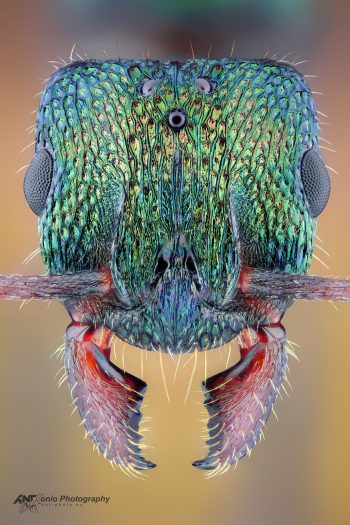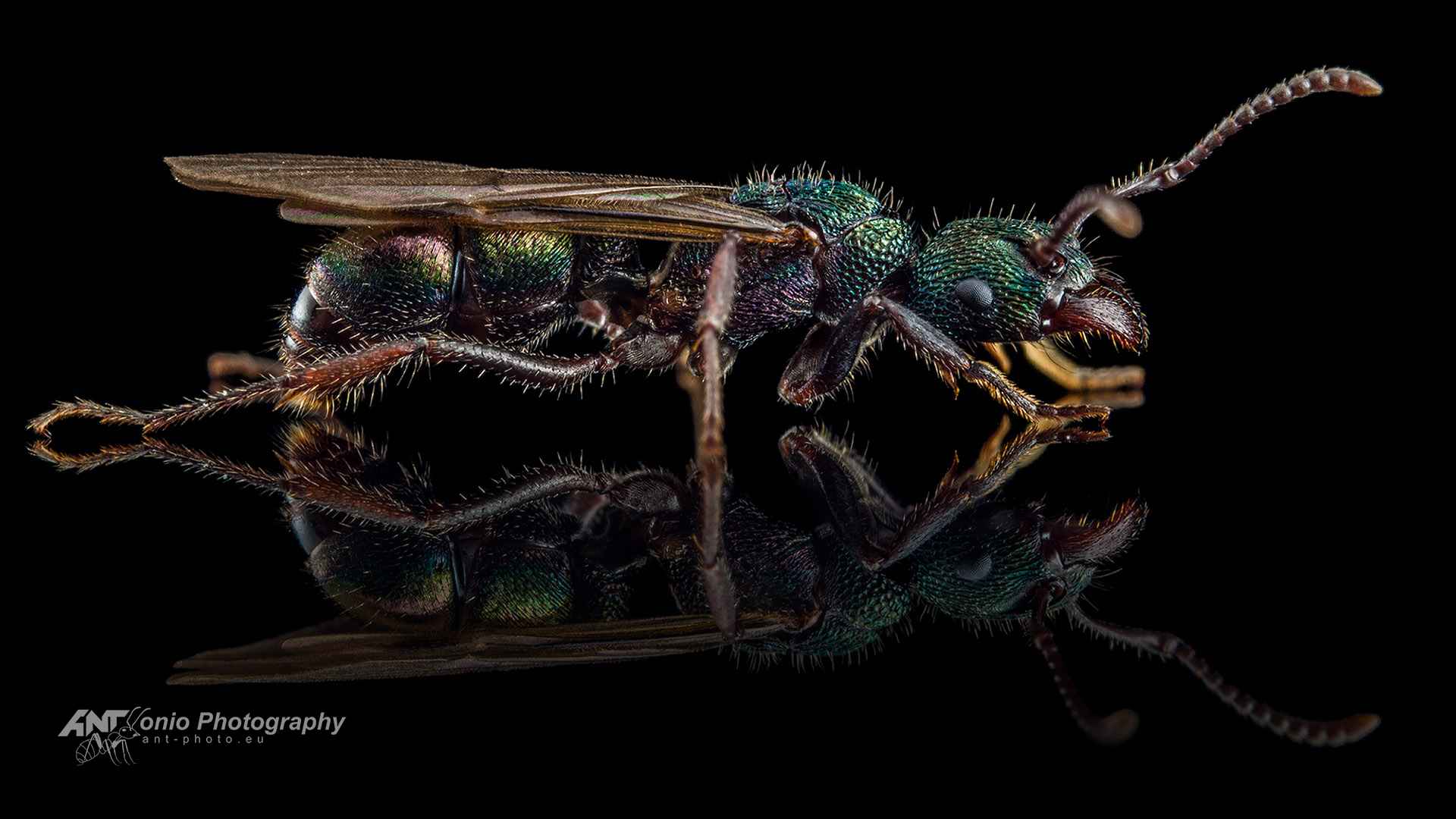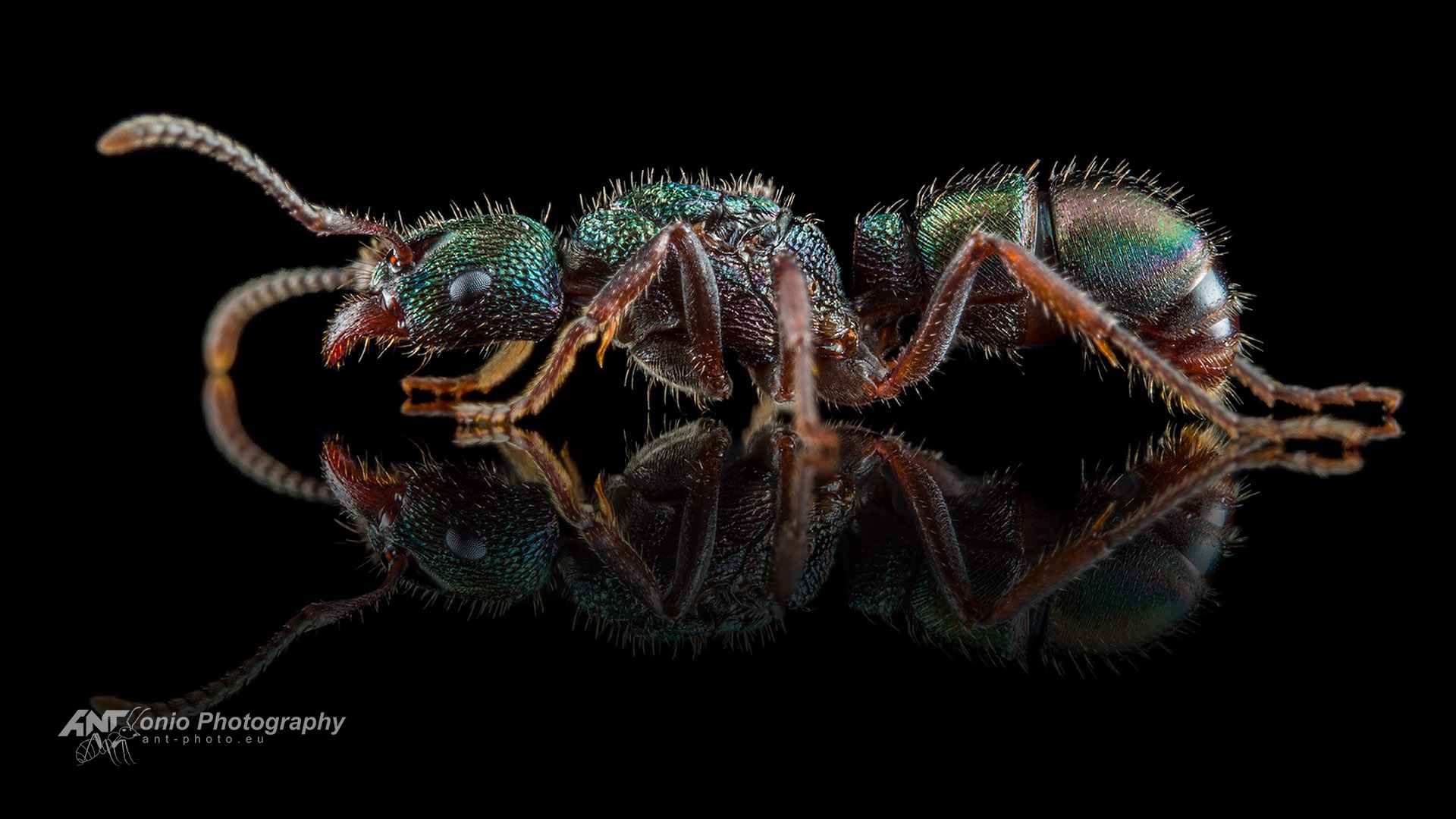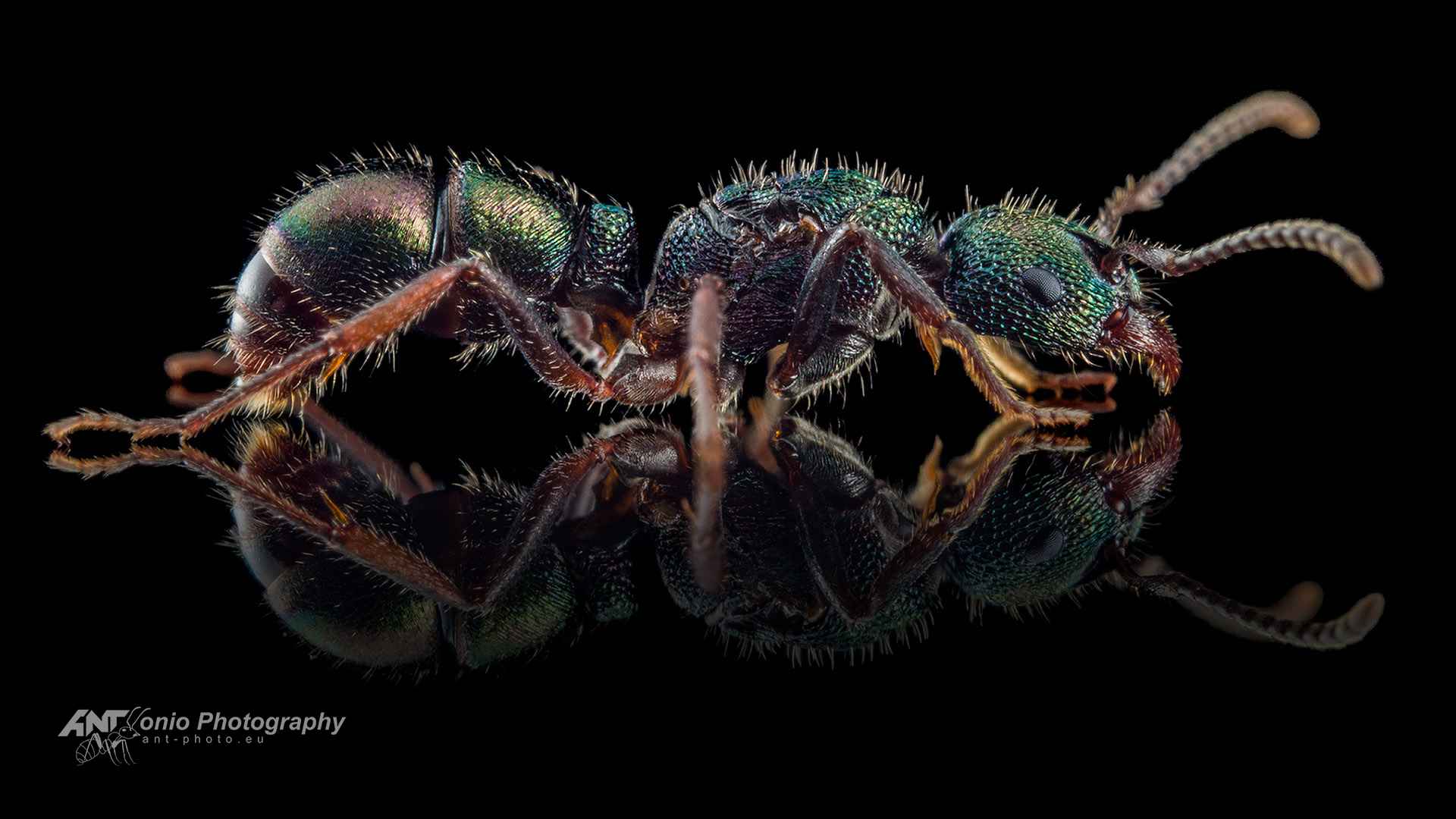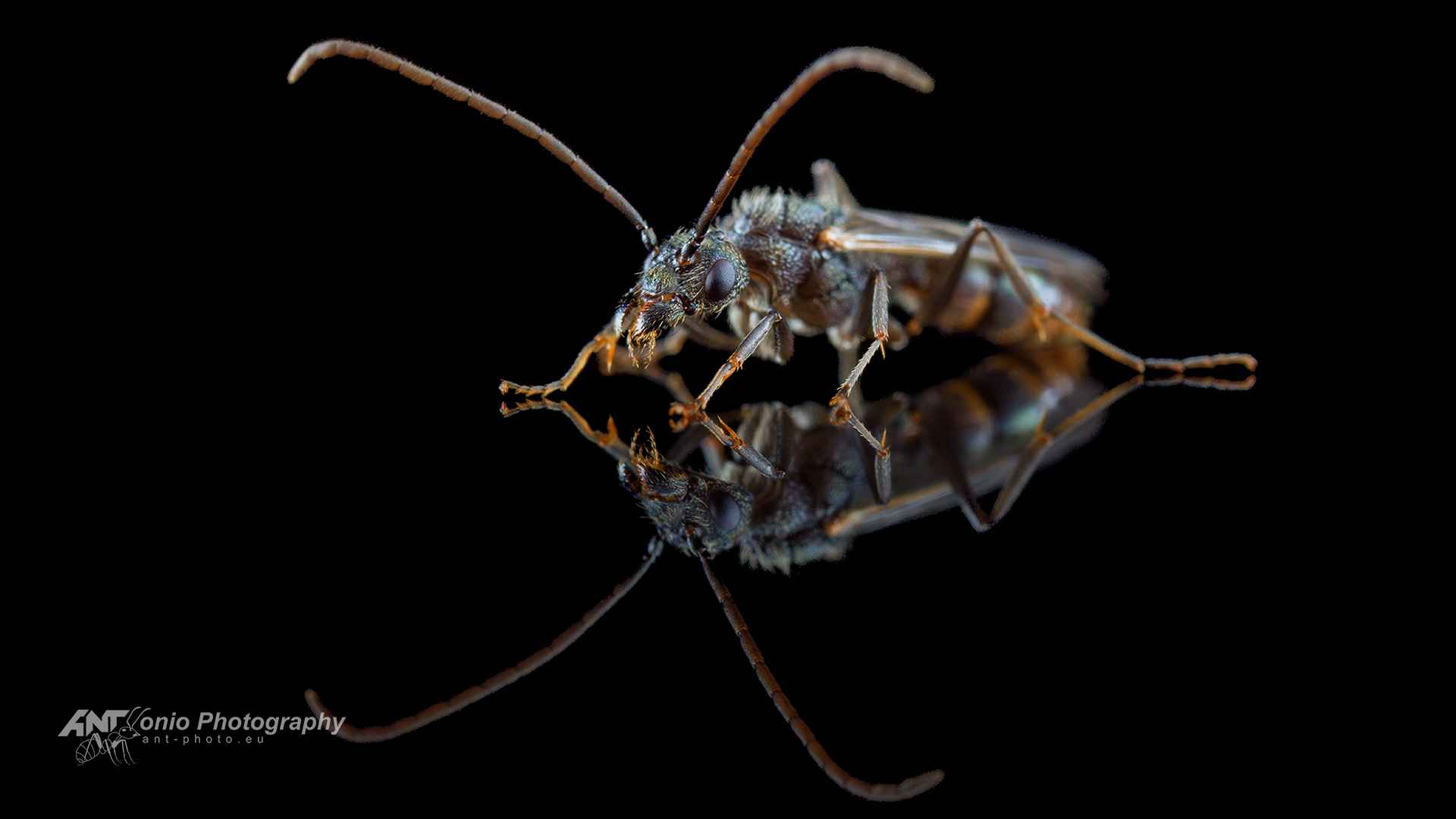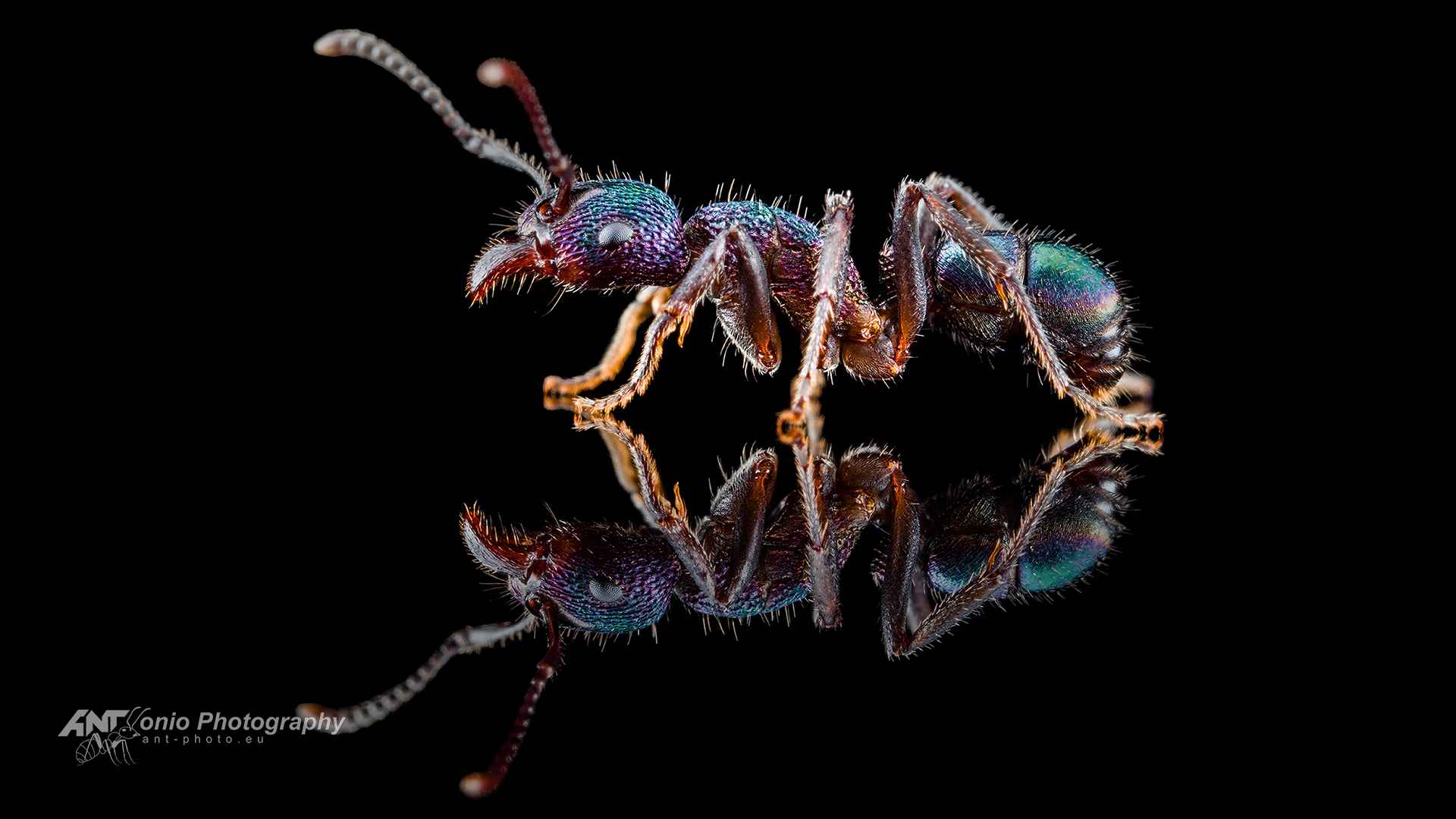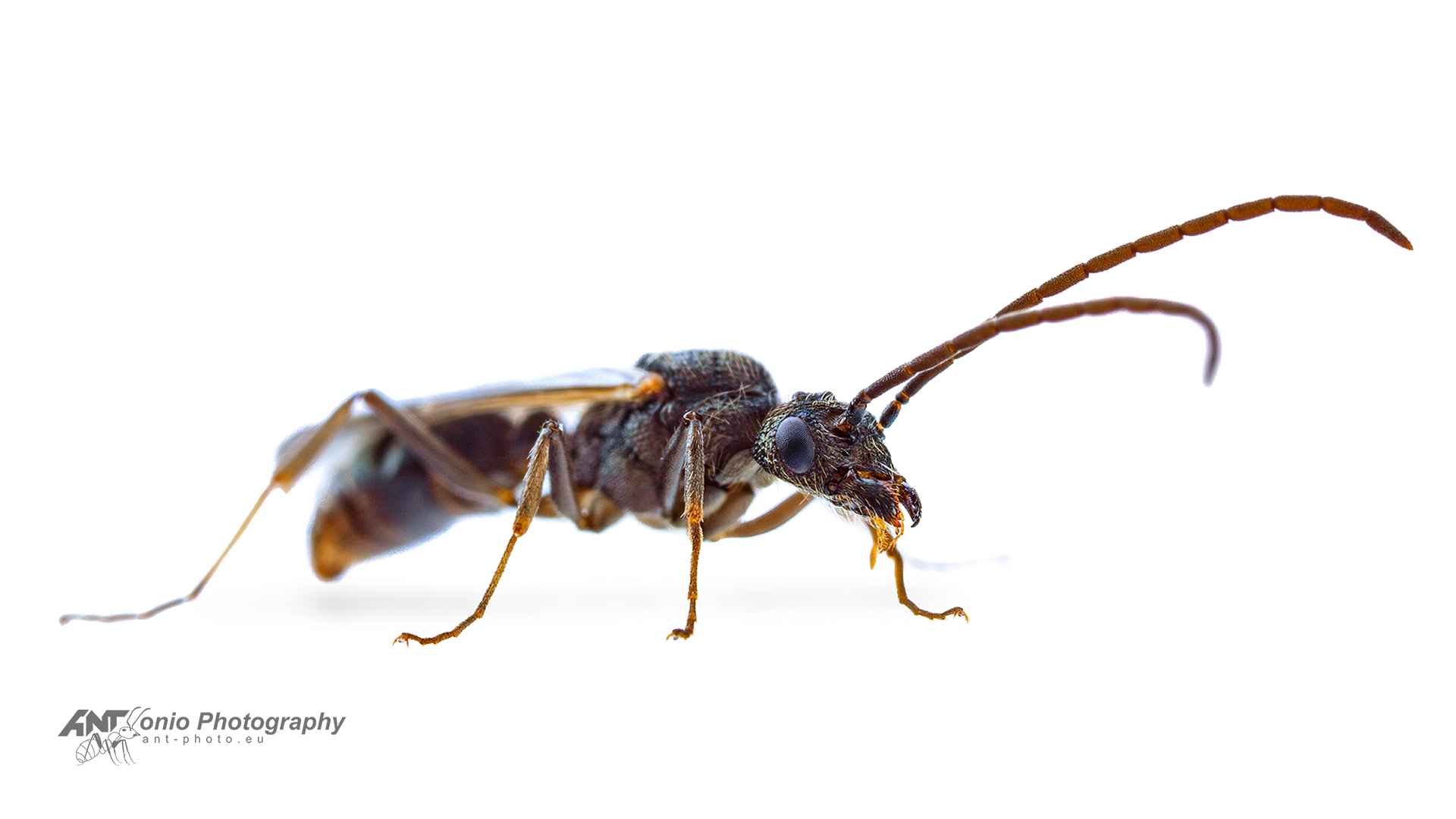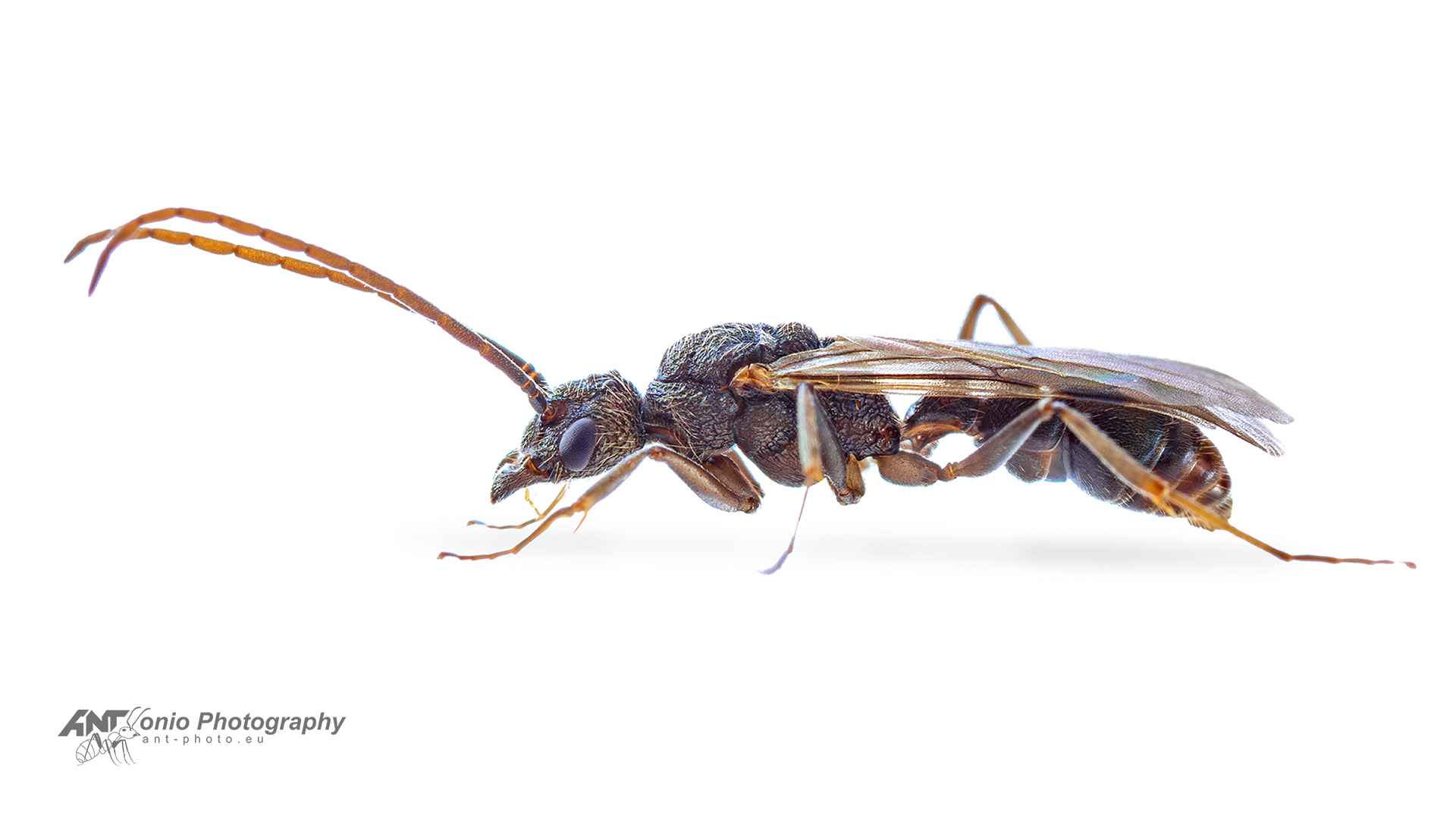Rhytidoponera metallica
Green head ant
| Rodzina | Family: | Formicidae |
| Podrodzina | Subfamily: | Ectatomminae |
| Plemię | Tribe: | Ectatommini |
| Rodzaj | Genus: | Rhytidoponera |
| Gatunek | Species: | R. metallica |
![]() Rhytidoponera metallica to mrówki występujące na całym terenie Australii oraz Nowej Zelandii. Pospolicie występują na terenach miejskich, gdzie z powodu dość silnego jadu stanowią potencjalne niebezpieczeństwo dla ludzi, szczególnie dzieci. Znane są przypadki, gdy po kilku użądleniach przez Rhytidoponera metallica osoby pożądlone dostawały szoku anafilaktycznego i wymagały podania surowicy. Odnotowano również przypadki uśmiercenia drobiu. Pomimo potencjalnego niebezpieczeństwa Rhitidoponera metallica jest pożyteczna zarówno dla ludzi jak i ekosystemu. Mrówki te przyczyniają się do rozprzestrzeniania nasion różnych roślin zakopując je pod ziemią na głębokości która chroni je przed pożarami. U Rhytidoponera metallica bardzo często występują gamergaty czyli płodne robotnice które po kopulacji z samcami są w stanie składać zapłodnione jaja. Z tego też powodu występują one w koloniach częściej niż normalne królowe. Zarówno nazwa naukowa R. metallica jak i angielska – „green head ants”, odnosi się do koloru tych mrówek. Robotnice i królowe mają metaliczne ubarwienie w różnych odcieniach zieleni i fioletu. Ubarwienie Rhytidoponera zmienia się wraz z rejonem Australii, który zamieszkują. W rejonach z większą ilością opadów mrówki te mają zazwyczaj zielony kolor z fioletowymi odcieniami po bokach mezosomy. W północnych rejonach Nowej Południowej Walii i południowych rejonach Queensland ma on kolor czerwonawo-fioletowy przechodzący miejscami w złoty. W populacji tej kolor zielony prawie nie występuje. Populacja występująca w północnych rejonach Queensland wydaje się matowo zielona i zupełnie odmienna od tych żyjących bardziej na południe. W niektórych rejonach odkryto dwie różne formy barwne w obrębie tej samej kolonii. Oprócz zmienności kolorystycznej występują też różnice morfologiczne jak np: rozmiar i kształt głowy, różnice w budowie czułków czy inna rzeźba na niektórych częściach ciała.
Rhytidoponera metallica to mrówki występujące na całym terenie Australii oraz Nowej Zelandii. Pospolicie występują na terenach miejskich, gdzie z powodu dość silnego jadu stanowią potencjalne niebezpieczeństwo dla ludzi, szczególnie dzieci. Znane są przypadki, gdy po kilku użądleniach przez Rhytidoponera metallica osoby pożądlone dostawały szoku anafilaktycznego i wymagały podania surowicy. Odnotowano również przypadki uśmiercenia drobiu. Pomimo potencjalnego niebezpieczeństwa Rhitidoponera metallica jest pożyteczna zarówno dla ludzi jak i ekosystemu. Mrówki te przyczyniają się do rozprzestrzeniania nasion różnych roślin zakopując je pod ziemią na głębokości która chroni je przed pożarami. U Rhytidoponera metallica bardzo często występują gamergaty czyli płodne robotnice które po kopulacji z samcami są w stanie składać zapłodnione jaja. Z tego też powodu występują one w koloniach częściej niż normalne królowe. Zarówno nazwa naukowa R. metallica jak i angielska – „green head ants”, odnosi się do koloru tych mrówek. Robotnice i królowe mają metaliczne ubarwienie w różnych odcieniach zieleni i fioletu. Ubarwienie Rhytidoponera zmienia się wraz z rejonem Australii, który zamieszkują. W rejonach z większą ilością opadów mrówki te mają zazwyczaj zielony kolor z fioletowymi odcieniami po bokach mezosomy. W północnych rejonach Nowej Południowej Walii i południowych rejonach Queensland ma on kolor czerwonawo-fioletowy przechodzący miejscami w złoty. W populacji tej kolor zielony prawie nie występuje. Populacja występująca w północnych rejonach Queensland wydaje się matowo zielona i zupełnie odmienna od tych żyjących bardziej na południe. W niektórych rejonach odkryto dwie różne formy barwne w obrębie tej samej kolonii. Oprócz zmienności kolorystycznej występują też różnice morfologiczne jak np: rozmiar i kształt głowy, różnice w budowie czułków czy inna rzeźba na niektórych częściach ciała.
![]() Rhytidoponera metallica is an ant species that can be found throughout Australia and New Zealand. They are common in urban areas where, due to the quite strong venom, they are a potential danger for people, especially children. There are known cases where, after a few stings by Rhytidoponera metallica, people got an anaphylactic shock and required the use of serum. Poultry also can be killed by this species. Despite its potential dangers, Rhitidoponera metallica is beneficial both to humans and the ecosystem. These ants spread the seeds of various plants by burying them underground to a depth that protects them from fires. In Rhytidoponera metallica colonies gamergates are very common, i.e. fertile workers which, after mating with males, are able to lay fertilized eggs. For this reason, they are more common in colonies than normal queens. Both the scientific name R. metallica and the English „green head ants” refer to the color of these ants. Workers and queens are metallic in various shades of green and purple. Rhytidoponera coloration changes with the area of Australia they inhabit. In regions with higher rainfall, these ants are usually green with purple tinges on the sides of the mesosome. In the northern parts of New South Wales and southern Queensland, it is reddish purple to gold in some places. Green is almost absent in this population. The population of northern Queensland appears dull green and quite different from those living further south. In some areas, two different color forms have been discovered within the same colony. In addition to the color variation, there are also morphological differences, such as the size and shape of the head, differences in the structure of antennae or other sculpture on some parts of the body.
Rhytidoponera metallica is an ant species that can be found throughout Australia and New Zealand. They are common in urban areas where, due to the quite strong venom, they are a potential danger for people, especially children. There are known cases where, after a few stings by Rhytidoponera metallica, people got an anaphylactic shock and required the use of serum. Poultry also can be killed by this species. Despite its potential dangers, Rhitidoponera metallica is beneficial both to humans and the ecosystem. These ants spread the seeds of various plants by burying them underground to a depth that protects them from fires. In Rhytidoponera metallica colonies gamergates are very common, i.e. fertile workers which, after mating with males, are able to lay fertilized eggs. For this reason, they are more common in colonies than normal queens. Both the scientific name R. metallica and the English „green head ants” refer to the color of these ants. Workers and queens are metallic in various shades of green and purple. Rhytidoponera coloration changes with the area of Australia they inhabit. In regions with higher rainfall, these ants are usually green with purple tinges on the sides of the mesosome. In the northern parts of New South Wales and southern Queensland, it is reddish purple to gold in some places. Green is almost absent in this population. The population of northern Queensland appears dull green and quite different from those living further south. In some areas, two different color forms have been discovered within the same colony. In addition to the color variation, there are also morphological differences, such as the size and shape of the head, differences in the structure of antennae or other sculpture on some parts of the body.

